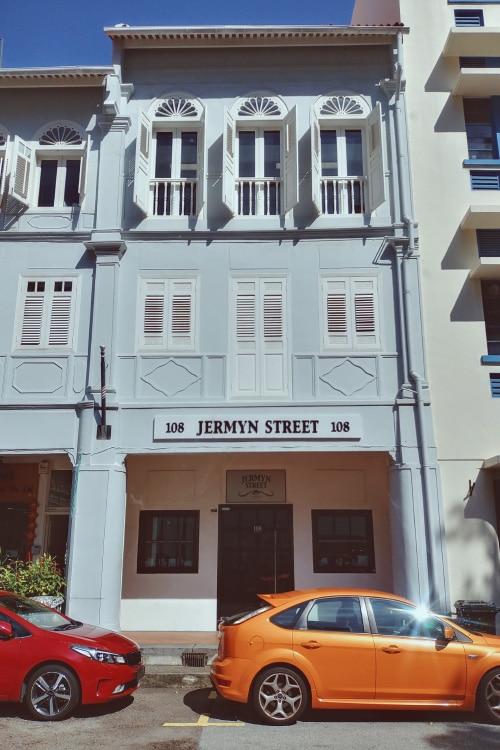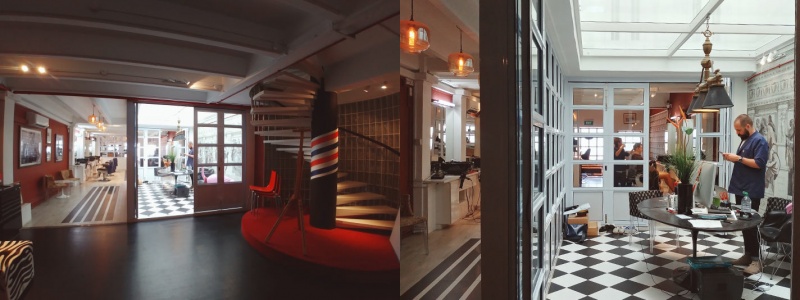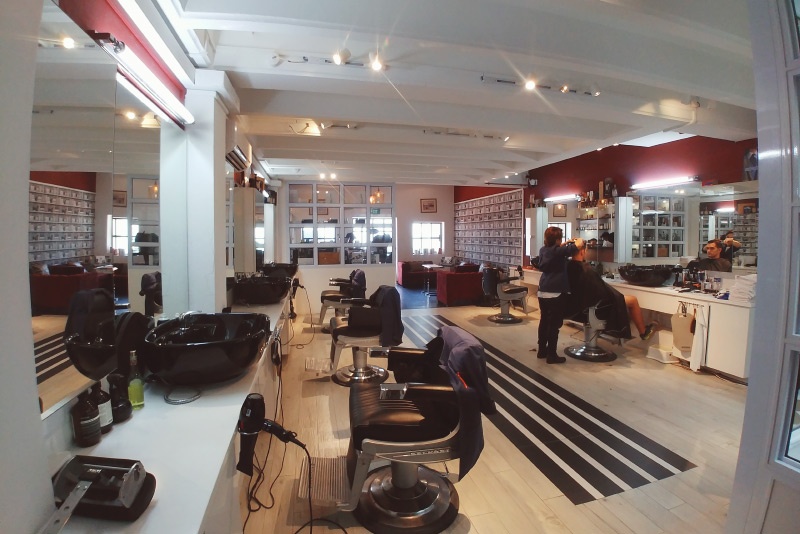Inside Jermyn Street with Steve Chapman
For a long time, barbershops have always been an indispensable part of the local neighbourhood. As a child, I used to follow my father to the barbershop. The familiar red, white, and blue rotating pole was a welcoming sight, and after my dad’s haircut was done, I received a lollipop as a reward. Over time, my curiosity extended from sitting in a corner and observing how focused the barbers were on their craft to the desire to examine everything in the shop.
I was hoping that my trip to Jermyn Street would bring back memories. When I first walked through the doors, it felt like I just stepped into a more refined version of a modern-day barbershop—from wooden floors to pristine white walls, to a luxurious sofa with leather cushions. The walls were plastered with wallpapers of Greek Gods, alongside newspaper clippings announcing the resignation of Nixon. The only familiarity was the sound of wheezing clippers and the rhythmic snipping of the scissors.
The haircutting industry has definitely evolved over the years; from a $7 haircut in the neighbourhood to the demand for bespoke services—barbershops are no longer the neighbourhood dwellers and can now be found competing against the top hair salons. After being in the trade for 9 years and living in Singapore for 2 years, General Manager cum Head Barber Steve Chapman talks to us about the rise of barbershops in the UK and Singapore, as well as the story of Jermyn Street.
HNW: What is Jermyn Street, and why is it in Singapore?
Steve Chapman: Jermyn Street is a famous street in London where gentlemen of distinction like those who work at the Royal Courts of Justice frequent as a one-stop place to get their shoes, shirts, hats, suits and basically, everything. Because of how well the street flourished and the historical background of it, the name became a brand.
So Jermyn Street in London has an association that runs certain things and determines what happens on the street. There is also a general committee that oversees the businesses and Jermyn Street in Singapore is the only member of the London’s Jermyn Street Association that does not have an actual shop there.
Our CEO, Keith Power came up with the concept of Jermyn Street, and having lived in Singapore for a long time, he wanted to set up a place that recreates the same gentlemen’s grooming culture of that in the UK, with a technical level of barbering.
Tell us about the space.
I would say that we are going more of a classic British style. The furniture such as the barber chairs were flown in from the UK. We also have a bar, where we serve you drinks or even light you a cigar while you get a haircut. What we have here is similar to what we do in the UK. I have worked in various barbershops in different cities and we feel that there is a demand in Singapore.
We host different events for bespoke shoe launches, fashion brands, and even the British Polo Day was held at our space because we have a stage at the back for a DJ.
Describe the Jermyn Street experience.
We are a barbershop and that is the core of what we do. For a long time in the UK, there were only high-end hairdressers, and barbershops were considered cheap. So, you would only get a certain level of service at the barbershop. But now, barbershops are evolving and carving out their own niche by providing great services—in terms of the way you are treated, and how you want your hair to be. All our barbers are highly trained. We really try and incorporate all the values and elements of hairdressing and grooming for men. I think all these points make us stand out.
Who is the Jermyn Street customer?
We are quite location-based and get a wide variety around our area. We have shippers, bankers, lawyers, baristas, bartenders, MMA fighters, personal trainers and even people who work in advertising. Our customers come at different times of the day. We have a breakfast club on Wednesday at 7am and it is very calm, quiet, and relaxing. If you come on a Friday night, people generally drink whiskey or a gin and tonic, and the vibe becomes more chatty. We play different kinds of music and that helps to set the mood. At the end of the day, we try to accommodate the needs of our customers. Some people come in and talk the entire time during their haircut, while others want a 45 min nap after a stressful day at work.
What are your thoughts on your fellow barbershop competitors?
To me, we are all helping the community grow together. If we are busy, I am sure other barbershops are also busy, so I see it more as a collective effort to push up the standards of barbering in Singapore. I think it’s a good thing when Jermyn street and the other barbershops are full. It means that the industry is growing. After having been here for 2 years, we are expanding gradually—we started with 2 barbers and now we have 5. We get busier every day.

Do you think there is gender stereotyping among barbers? And is there a perceived difference between local and European barbers?
Our lady barbers are really good at what they do. Sometimes people in the industry say things like “They are ladies. How can they be a barber?” Well, it’s a learning process that is the same as anything. You don’t need a beard to know how to trim a beard. I can cut long hair and I don’t have long hair. There isn’t any difference whether a man or woman cuts your hair. I am really proud that we have 2 lady barbers with us.
In my opinion, the Singapore barber culture is unlike any other. In the UK and US, there is a national training centre so everyone is trained to a certain degree before they are allowed to cut hair. In Singapore, you can start cutting hair tomorrow in a barbershop. A lot of people here are self-taught. I have met a lot of barbers who have been cutting hair for a long time, but when it comes to the fundamentals, they just don’t have the skill set and that is why we are trying to train people. The thing holding back Singapore’s barber culture is the lack of training.
What are the future plans for Jermyn Street?
Our aim long term is to grow Jermyn Street into a brand, so definitely more stores across South East Asia. We are also looking to have our own range of products.





